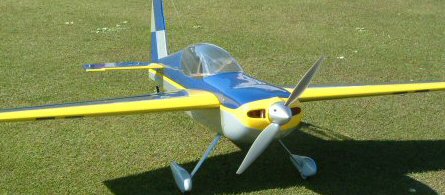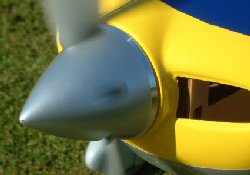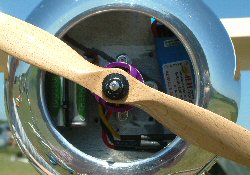|
|||
|
|
|
||
| View Shopping Cart |
| Home |
| Guides Available |
| About the Author |
| FAQs |
| Testimonials |
| Articles |
| Contact Andrew |
| Terms & Conditions |
| Mailing List |
| Links |
 |
 |
More high quality information
absolutely free with every
Gibbs Guides newsletter. Get
it here!
5 ways to increase model performance
- without buying a new power system!
Article by Andrew Gibbs
|
There are a number of ways to tweak a model to make sure its performing as well as it possibly can. This short article discusses how to get the most performance from a model, without buying a new power system. The propeller is a great place to start:
1. Choice of Propeller
Experimenting with propellers is often the easiest and
most effective way to get a model to perform better. The
greater the load a prop places on the battery, the more
power your motor will draw. However, even small increases
in prop diameter can cause big changes in the current
drawn by the motor, so when changing props, always be
sure to check the current consumption is still within
the limitations of your motor, battery and ESC.
Another easy and simple way to get more performance is to check that the pitch of the prop is appropriate to the needs of the model. You may get more speed from a model by changing to a prop with a greater pitch. For example, instead of a 9 x 5, maybe try a 9 x 6. Again, always check the current consumption when changing props.
If rate of climb and not level flight speed is your preference, changing to a lower pitch prop may work wonders. For example, an electric glider might climb significantly better with a 12 x 7 instead of a 11 x 8.
2. Balance That Prop
An unbalanced propeller can develop a significant amount
of vibration, especially at high rpm, and that vibration
uses energy from the motor which is then not available
to turn the propeller. For this reason, balancing the
prop can yield a surprising benefit in performance.
For electric models in particular, I recommend investing in a good quality balancer. The investment will repay dividends for every one of your models in the future. Spinners can also be out of balance, so remember to balance them too.
|
|
3. Check control surface alignment
A model can appear to be flying straight when in fact
it’s crabbing sideways a little. This presents the
side of the fuselage to the airflow, and can really slow
the model down. Crabbing can be caused by incorrectly
set up control surfaces – if your rudder is deflected
right, and the ailerons left (left aileron up) when the
sticks are centred, chances are that the model is crabbing.
If you get the controls properly centred, the model could
pick up a surprising gain in speed.
Some models have two elevator halves, connected by a wire joiner. If the two halves are not aligned correctly, one elevator half may be up, while the other is down. This will produce drag, slowing the model down.
4. Optimising the balance point
A model with an excessively forward centre of gravity
(CG) will require an additional amount of up elevator
to maintain level flight, compared to the same model where
the CG is correctly positioned. While a forward centre
of gravity is good for longitudinal stability, the necessary
up elevator will cause some additional drag. Also, the
up elevator means that the tail will be producing more
of a downwards load than necessary, so the wing will have
to produce more lift to compensate, with an associated
increase in induced drag. Both of these factors will slow
the model down somewhat.
It can therefore be worth moving the CG rearwards in small increments, carefully assessing how the model flies after each change. As the CG moves rearwards, the elevator will become more sensitive, and so it may well be sensible to reduce the elevator throw a little. Take great care not to move the CG too far rearwards, or the model will become excessively sensitive. If the GC is taken even further rearward, the model will become unstable and even unflyable.
5. Flying style
Your flying style can significantly influence the performance
of a model. Tight turns cause a lot of drag, robbing the
model of airspeed. Instead of making tight turns, try
easing them out so that turns are wider. These cause much
less drag to be generated, and the model will fly for
longer and/or faster.
You can find a lot more information about electric power systems in the electric power systems series, available here
More high quality information
absolutely free with every
Gibbs Guides newsletter. Get
it here!


